- TOP
- Search Criteria
- KURAND SAKE MARKET
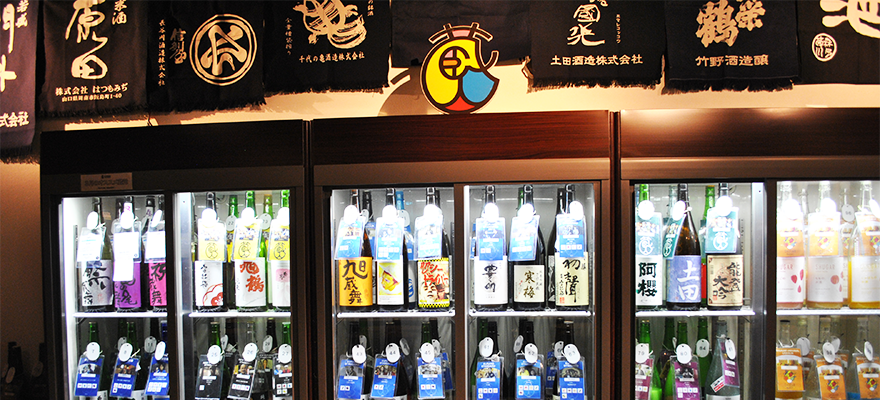
STORY
Choose from 100 Kinds of Sake
at KURAND SAKE MARKET's
All-You-Can Drink Sake Tasting
Sake.* It’s quite possibly one of the things that people look forward to trying the most during their trip to Japan. But just like with beer, wine, or really any kind of alcohol, the variety that exists can make it a challenge for the uninitiated to find something they like. When faced with a drink list full of unfamiliar terms like junmai shu or ginjo shu, the best most can do is choose one at random. Also given the price per drink at a typical izakaya, ordering a bunch to try usually isn’t the most cost effective option. But don't worry. This is why we have KURAND SAKE MARKET.
*So technically sake is called nihonshu (日本酒; lit. “Japanese alcohol”) in Japanese. Sake or o-sake (お酒) is the word for alcoholic drinks in general. But at this point, even within Japan sake has become pretty much interchangeable with nihonshu. Just some info in case you’re ever on a game show someday.
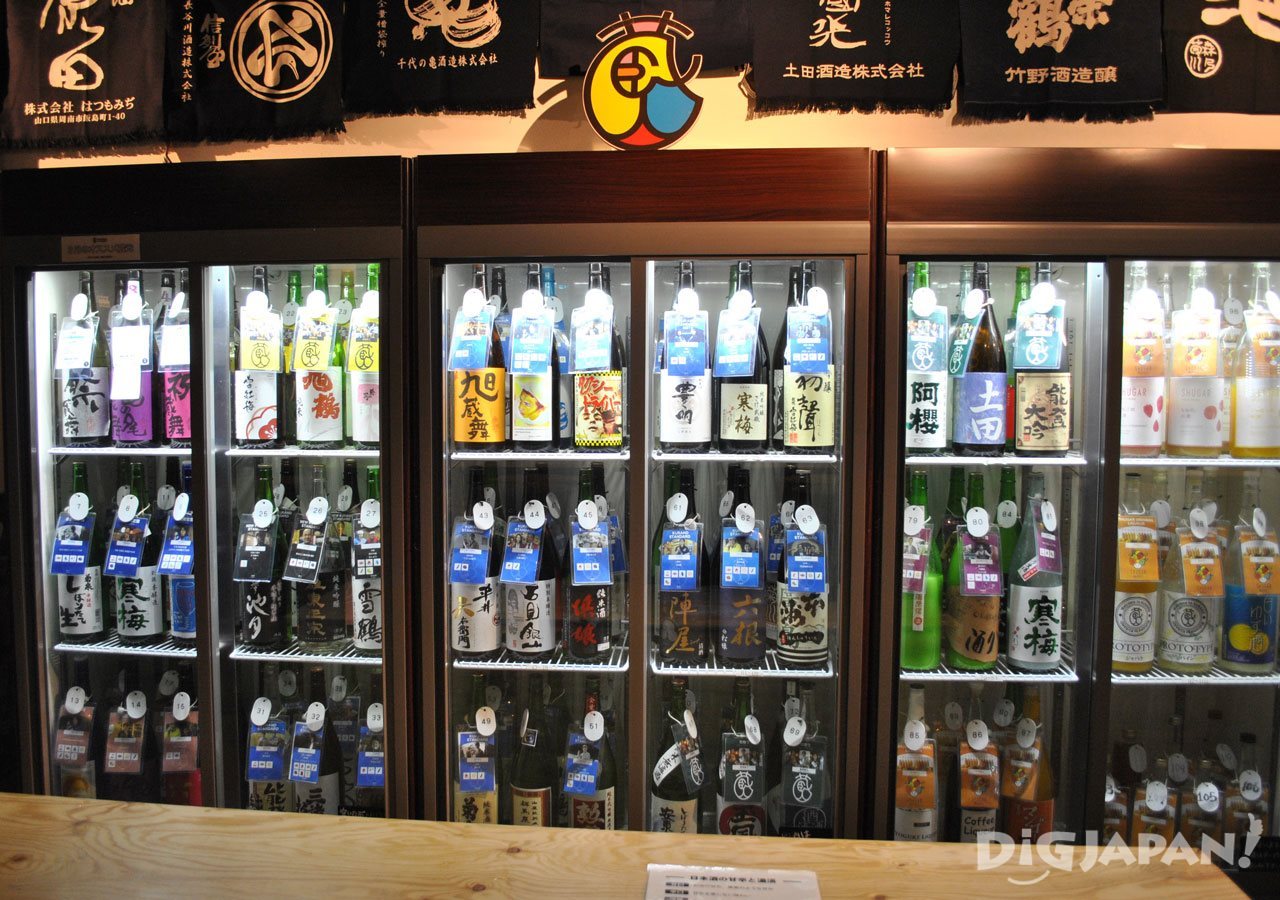
At KURAND SAKE MARKET, you can sample 100 kinds of sake from all over Japan in an unlimited sake tasting course for 3,000 yen (plus tax-- sorry!). They have stores in Asakusa, Ikebukuro, and Shinjuku, but the Shibuya store seems to be the most popular with visitors from overseas for their first sake experience.
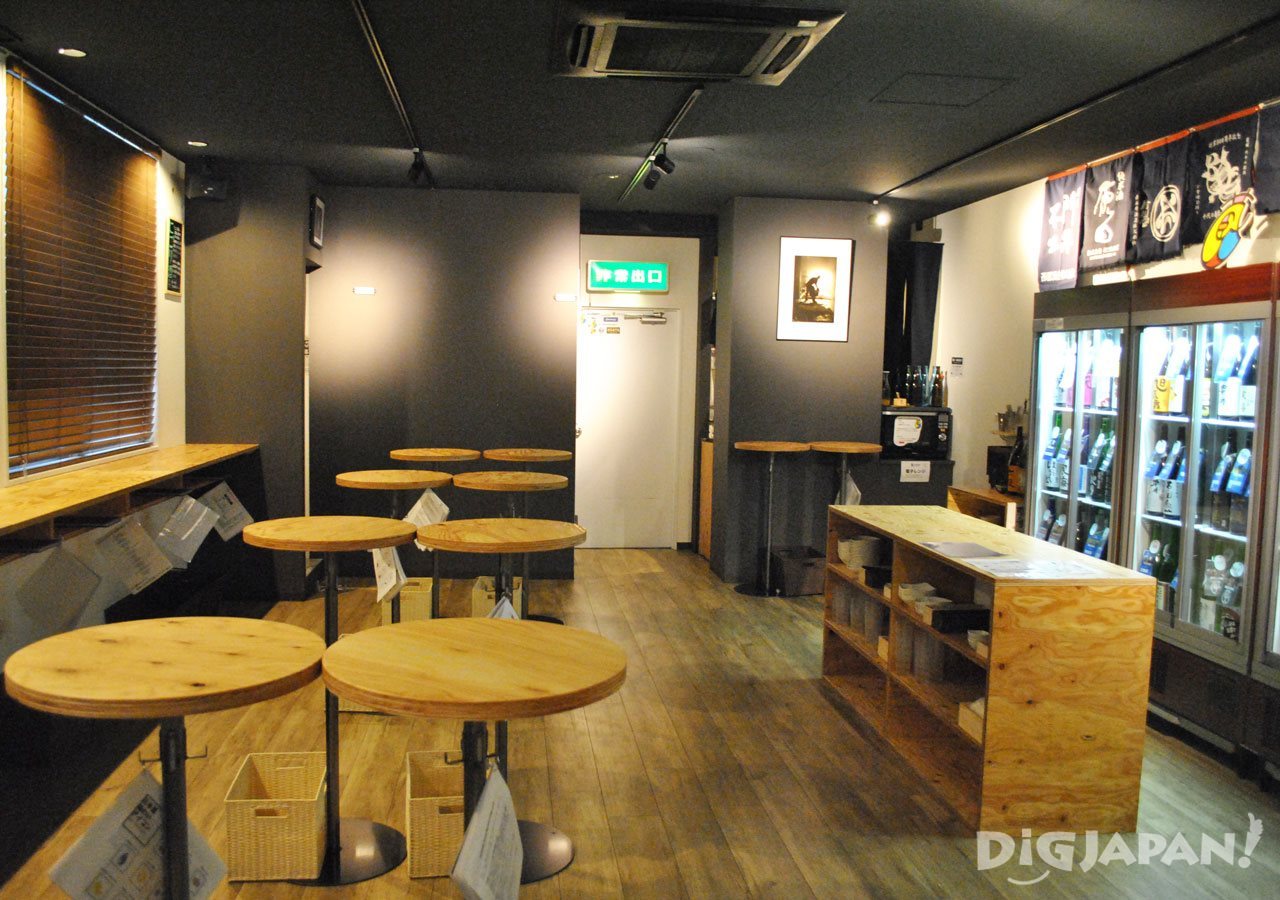

The sake served at KURAND SAKE MARKET are selected by the chain’s executive chief who used to be the chief brewer at a sake brewery. The selections include sake from nationally famous brands as well as hidden treasures from lesser-known breweries. The selection changes seasonally, so even repeaters can find something new and delicious.

Getting started on your sake adventure is easy. You pay your 3,000 yen at the reception and get your little cup. After that, you can help yourself to any and all of the sake chilling in the refrigerators that line the store. Should you have any questions, they have information in English, Korean, and Chinese available.
As there is no time limit for the all-you-can-drink course, you can take your time and enjoy. Just be sure to pace yourself and know your limit. Sake typically has an alcohol content somewhere between 15~20%, meaning it’s stronger than most wines.

There’s no food served at KURAND, but you can bring your own snacks. Or go out and buy some and come back. Or order delivery to the store. Not only is the store completely cool with this, but they even have chopsticks, seasonings, and a microwave you can use.
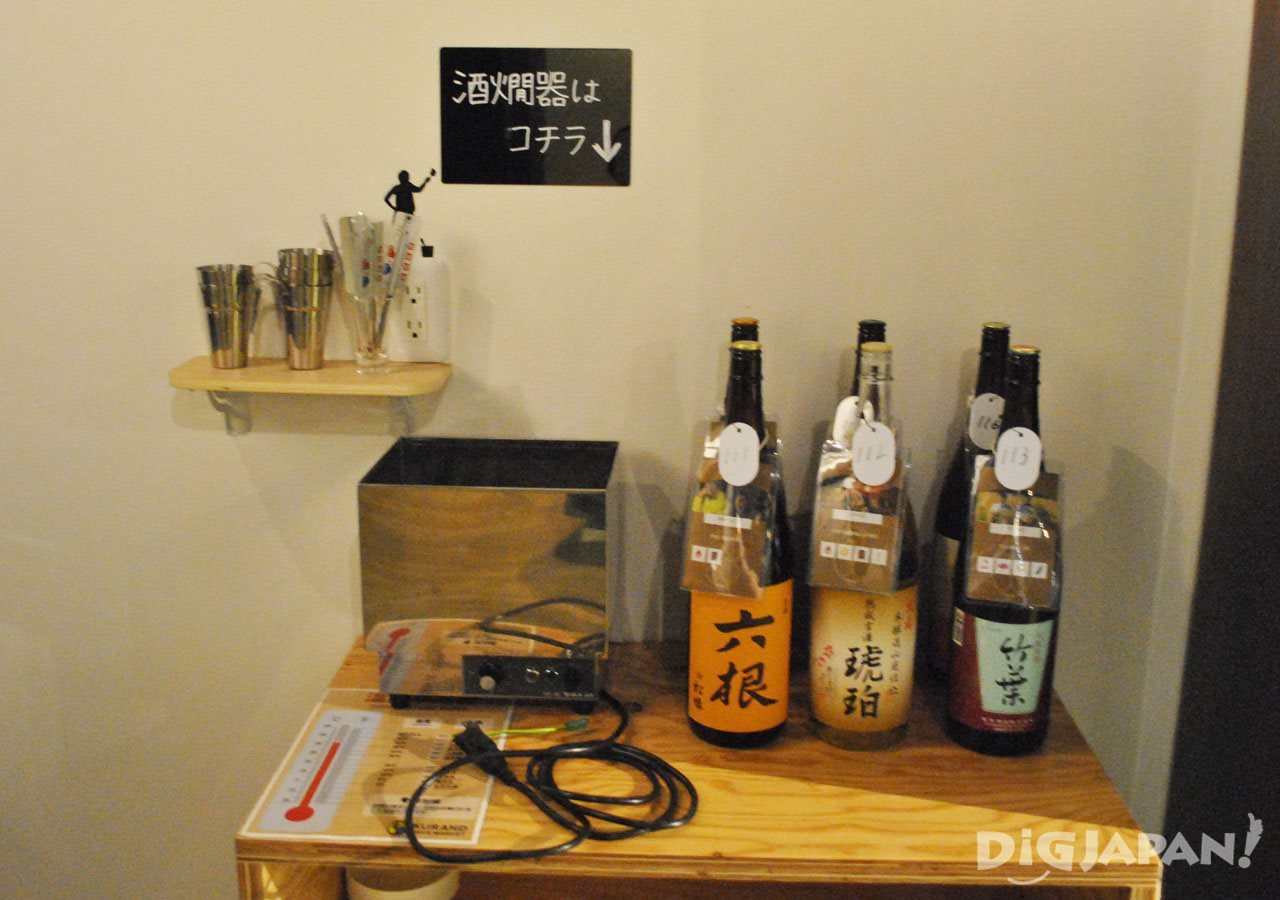
If you’re a fan of hot sake, you can get your atsukan (熱燗; hot sake) game on at KURAND. The store has a self-service sake heater complete with easy to understand instructions.

100 different types of sake may be a little overwhelming for those trying Japan’s national brew for the first time. To help out the beginners, KURAND has designed 11 sake tasting icons. These icons are printed on cards hung around the bottles and give a rough idea of how the sake will taste. Furthermore, the colors used for the background of these cards also have specific meanings. For example, pink indicates a "beginner" level sake. These choices provide a good tasting baseline.
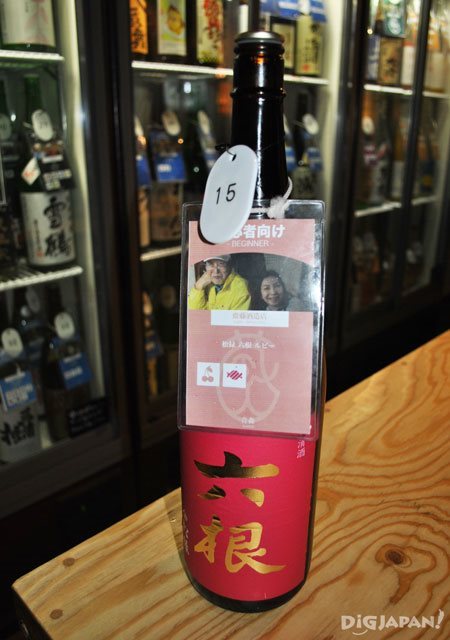
Besides information about the taste, the cards also show the name of the sake, the name of the brewery that made it, and even a picture of the brewery staff!
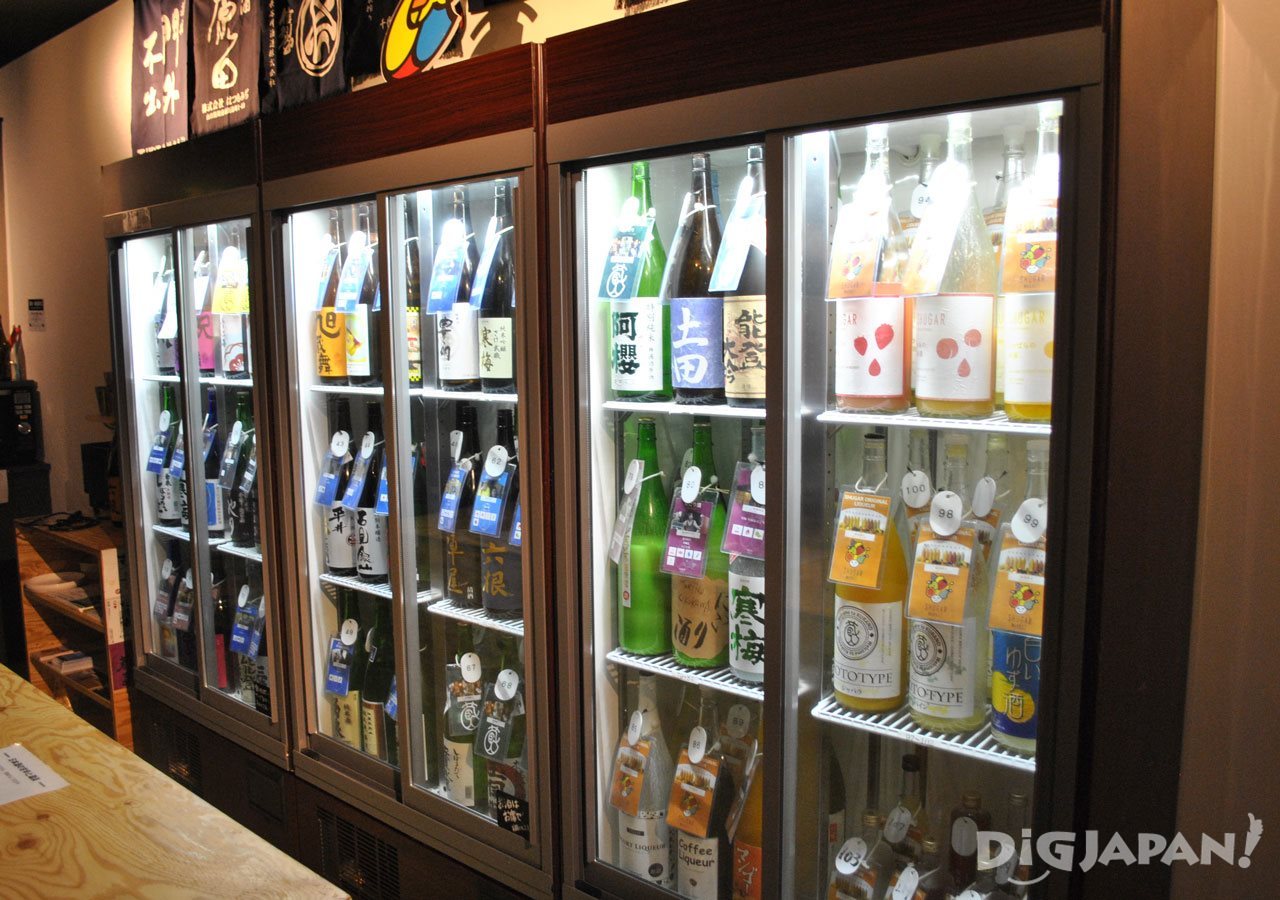
The sake are also separated by general category in the refridgerators, making it easy to look for similar types should you find one you like.
Of course, you can feel free to ignore all of this and just choose based on your gut or whichever sake have the prettiest labels. You do you.
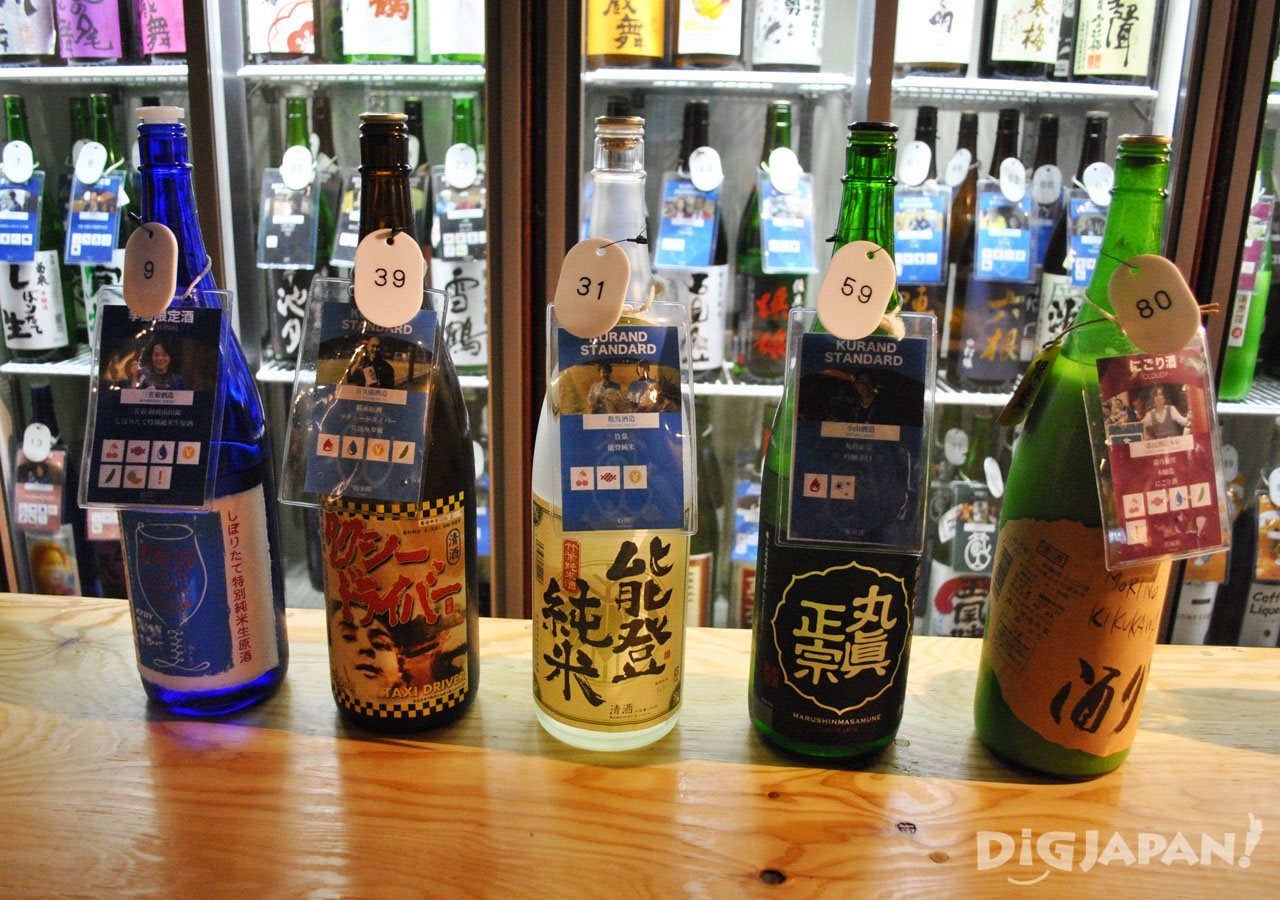
To end our piece, we’d like to introduce you to 5 sake chosen by the knowledgeable KURAND staff.
No. 1 Shibori-tate Tokubetsu Junmai Namagenshu from Miyoshikiku Brewery (Tokushima Prefecture)
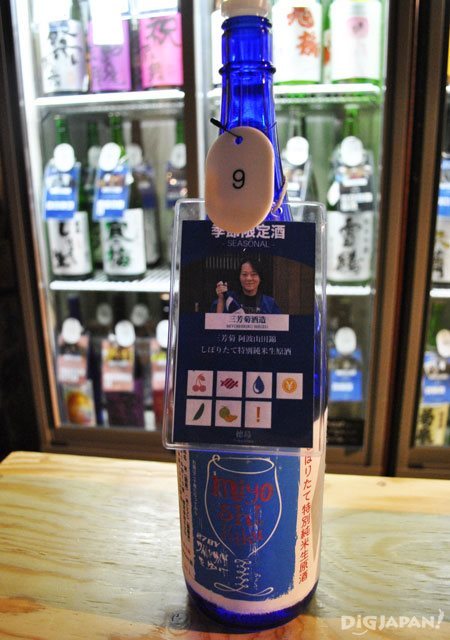
This sake is a nama genshu, meaning that no water was added to the finished product after the sake was pressed from the sake lees. It has a fresh acidity not found in other sake and a fruity taste similar to that of a white wine. There’s also a bit of sweetness, making this sake very easy to drink.
No. 2 Taxi Driver from Kikuzakari Brewery (Iwate Prefecture)
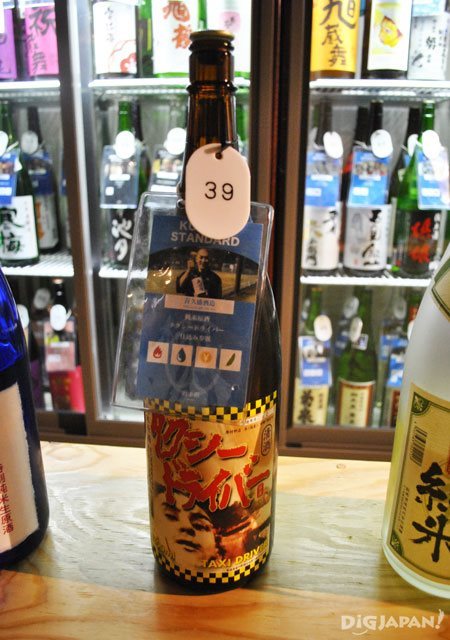
If the label and name of this sake weren’t enough to make you want to grab it, then the taste definitely will. Taxi Driver is an example of a junmai shu, meaning it was made using just water and rice (other sake will sometimes have extra alcohol added to the mix). Its crisp, fresh finish combined with its full taste make it a popular choice.
No. 3 Noto Junmai from Chikuha Brewery (Ishikawa Prefecture)

Chikuha Brewery is very particular about sourcing its ingredients. This junmai is made using rice and water from the Noto Peninsula. It has a mellow flavor full of the natural sweetness of rice.
No. 4 Marushin Masamune from Koyama Brewery (Tokyo)
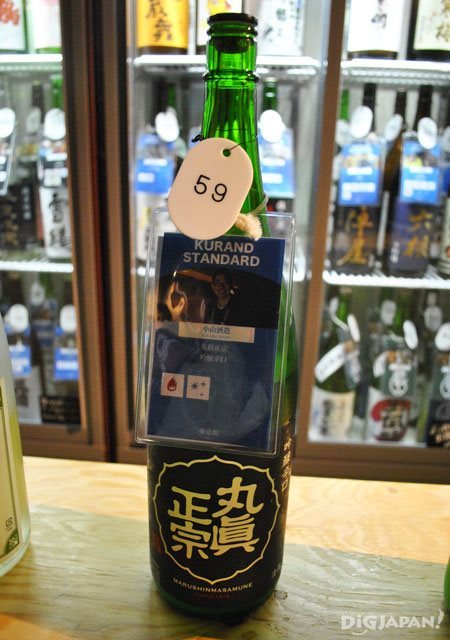
Koyama Brewery has the cool distinction of being the only sake brewery located within Tokyo's 23 wards (i.e. the metropolitan area). This crisp, dry sake goes down easy.
No. 5 Honjozo Nigorizake from Moritami Shuzo Honke Brewery (Miyagi Prefecture)
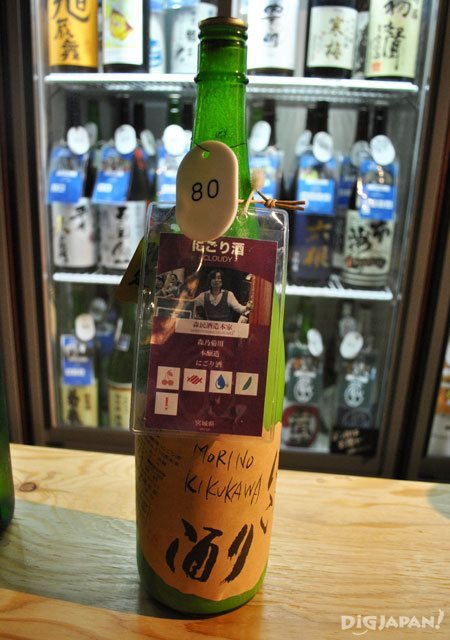
Last but not least on the list is this rich nigorizake. Literally meaning “cloudy alcohol,” the rice is not filtered out of the alcohol after it is fermented. This gives it a cloudy appearance and a sweet, rice-y flavor. It can be an acquired taste for some, but if you like, it you’ll love it. Definitely give it a try!
Remember, these are just five out of the 100 varieties of sake waiting for you at KURAND. So if you’re planning a trip to Tokyo, make sure you pencil in a trip to hang out with the cool staff as you toss back a couple of cups of sake. Cheers!
※Please note that the availability of the products mentioned in this article is subject to season and availability.
※As this place is very popular, making a reservation ahead of time is recommended. Check their homepage below for details.
※The legal drinking age in Japan is 20. Please drink responsibly.
ADDRESS
Matsumoto Bldg. 3F 2-9-20 Dogenzaka, Shibuya-ku, Tokyo
HOURS
Weekdays 5:00pm~11:00pm (10:00pm L.O.)
Weekends & Holidays 12:00pm~4:00pm (3:30pm L.O.), 5:00pm~11:00pm (10:00pm L.O.)
Open year-round (evenings only)
ACCESS
3 min walk from Keio Dentetsu Inokashira Line Shibuya Sta.
3 min walk from the Hachiko Exit of Shibuya Sta.
WEBSITES
KURAND SAKE MARKET: http://kurand.jp/en/
Shibuya Store (Japanese only): http://kurand.jp/sakemarket/shibuya/
*So technically sake is called nihonshu (日本酒; lit. “Japanese alcohol”) in Japanese. Sake or o-sake (お酒) is the word for alcoholic drinks in general. But at this point, even within Japan sake has become pretty much interchangeable with nihonshu. Just some info in case you’re ever on a game show someday.
KURAND SAKE MARKET

No exaggeration: KURAND SAKE MARKET stocks 100 different kinds of sake.
At KURAND SAKE MARKET, you can sample 100 kinds of sake from all over Japan in an unlimited sake tasting course for 3,000 yen (plus tax-- sorry!). They have stores in Asakusa, Ikebukuro, and Shinjuku, but the Shibuya store seems to be the most popular with visitors from overseas for their first sake experience.

Simple but stylish: the interior of KURAND SAKE MARKET.
Only The Best Here

If you're looking for awesome sake, this is the place.
The sake served at KURAND SAKE MARKET are selected by the chain’s executive chief who used to be the chief brewer at a sake brewery. The selections include sake from nationally famous brands as well as hidden treasures from lesser-known breweries. The selection changes seasonally, so even repeaters can find something new and delicious.
Japan's Sake Scene
Sake was seen as a men’s drink for many years in Japan, but recently it’s been rapidly gaining popularity among women in something of a "sake boom." Typical customers of the Shibuya branch of KURAND SAKE MARKET are an even mix of men and women in their late twenties to early fifties. Of course, there are plenty of non-Japanese sake lovers to be seen as well.How KURAND Works

KURAND explained in four pictures: check the price; pay the man; get your cup; drink!
Getting started on your sake adventure is easy. You pay your 3,000 yen at the reception and get your little cup. After that, you can help yourself to any and all of the sake chilling in the refrigerators that line the store. Should you have any questions, they have information in English, Korean, and Chinese available.
As there is no time limit for the all-you-can-drink course, you can take your time and enjoy. Just be sure to pace yourself and know your limit. Sake typically has an alcohol content somewhere between 15~20%, meaning it’s stronger than most wines.
Order-In OK!

All the necessities for enjoying a nice meal.
There’s no food served at KURAND, but you can bring your own snacks. Or go out and buy some and come back. Or order delivery to the store. Not only is the store completely cool with this, but they even have chopsticks, seasonings, and a microwave you can use.
Heat Things Up!

This is their self-service sake warming device.
If you’re a fan of hot sake, you can get your atsukan (熱燗; hot sake) game on at KURAND. The store has a self-service sake heater complete with easy to understand instructions.
Beginner Friendly Icons

KURAND makes it easy to find a sake that suits your taste.
100 different types of sake may be a little overwhelming for those trying Japan’s national brew for the first time. To help out the beginners, KURAND has designed 11 sake tasting icons. These icons are printed on cards hung around the bottles and give a rough idea of how the sake will taste. Furthermore, the colors used for the background of these cards also have specific meanings. For example, pink indicates a "beginner" level sake. These choices provide a good tasting baseline.

A pink tag means the sake is good for beginners.
Besides information about the taste, the cards also show the name of the sake, the name of the brewery that made it, and even a picture of the brewery staff!

The sake is organized by general type for your convenience.
The sake are also separated by general category in the refridgerators, making it easy to look for similar types should you find one you like.
Of course, you can feel free to ignore all of this and just choose based on your gut or whichever sake have the prettiest labels. You do you.
How To Avoid Tipsiness
As mentioned above, sake is pretty alcoholic. To avoid getting too inebriated while enjoying yourself, the staff of KURAND recommends the following: for every portion of sake you drink, follow it up with 1.5 times that amount in water. To help remind you about the importance of hydration, the store has “water time” once every hour.Sake Events
KURAND SAKE MARKET also has information about sake-related events held on weekends. These are aimed at helping visitors to Japan learn more about sake. Conducted by international staff using both English and Japanese, you can learn about the different classifications of sake and more. For example, during their “Kuramoto-san to isho ni kanpai shiyo (Let’s have a toast with the sake brewers)” program, you can actually meet the people who make sake.Staff Sake Picks

Here are the top 5 picks from the staff.
To end our piece, we’d like to introduce you to 5 sake chosen by the knowledgeable KURAND staff.
No. 1 Shibori-tate Tokubetsu Junmai Namagenshu from Miyoshikiku Brewery (Tokushima Prefecture)

This sake is a nama genshu, meaning that no water was added to the finished product after the sake was pressed from the sake lees. It has a fresh acidity not found in other sake and a fruity taste similar to that of a white wine. There’s also a bit of sweetness, making this sake very easy to drink.
No. 2 Taxi Driver from Kikuzakari Brewery (Iwate Prefecture)

If the label and name of this sake weren’t enough to make you want to grab it, then the taste definitely will. Taxi Driver is an example of a junmai shu, meaning it was made using just water and rice (other sake will sometimes have extra alcohol added to the mix). Its crisp, fresh finish combined with its full taste make it a popular choice.
No. 3 Noto Junmai from Chikuha Brewery (Ishikawa Prefecture)

Chikuha Brewery is very particular about sourcing its ingredients. This junmai is made using rice and water from the Noto Peninsula. It has a mellow flavor full of the natural sweetness of rice.
No. 4 Marushin Masamune from Koyama Brewery (Tokyo)

Koyama Brewery has the cool distinction of being the only sake brewery located within Tokyo's 23 wards (i.e. the metropolitan area). This crisp, dry sake goes down easy.
No. 5 Honjozo Nigorizake from Moritami Shuzo Honke Brewery (Miyagi Prefecture)

Last but not least on the list is this rich nigorizake. Literally meaning “cloudy alcohol,” the rice is not filtered out of the alcohol after it is fermented. This gives it a cloudy appearance and a sweet, rice-y flavor. It can be an acquired taste for some, but if you like, it you’ll love it. Definitely give it a try!
Remember, these are just five out of the 100 varieties of sake waiting for you at KURAND. So if you’re planning a trip to Tokyo, make sure you pencil in a trip to hang out with the cool staff as you toss back a couple of cups of sake. Cheers!
※Please note that the availability of the products mentioned in this article is subject to season and availability.
※As this place is very popular, making a reservation ahead of time is recommended. Check their homepage below for details.
※The legal drinking age in Japan is 20. Please drink responsibly.
Information
KURAND SAKE MARKET Shibuya StoreADDRESS
Matsumoto Bldg. 3F 2-9-20 Dogenzaka, Shibuya-ku, Tokyo
HOURS
Weekdays 5:00pm~11:00pm (10:00pm L.O.)
Weekends & Holidays 12:00pm~4:00pm (3:30pm L.O.), 5:00pm~11:00pm (10:00pm L.O.)
Open year-round (evenings only)
ACCESS
3 min walk from Keio Dentetsu Inokashira Line Shibuya Sta.
3 min walk from the Hachiko Exit of Shibuya Sta.
WEBSITES
KURAND SAKE MARKET: http://kurand.jp/en/
Shibuya Store (Japanese only): http://kurand.jp/sakemarket/shibuya/

Liked this story? Like DiGJAPAN!
on Facebook for daily updates!
THIS ARTICLE IS BASED ON INFORMATION FROM 05 23,2016 Author:Rachael Ragalye













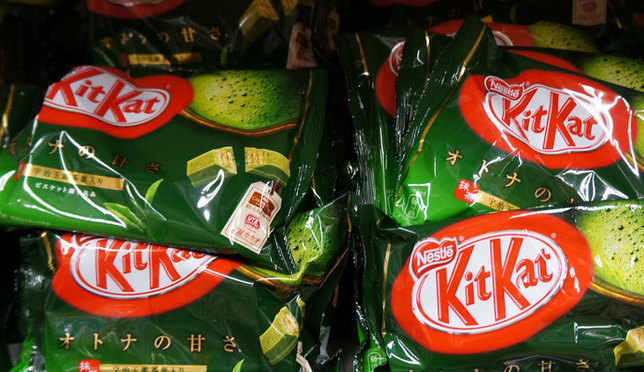
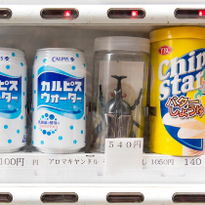

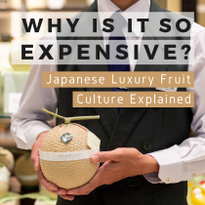





NEW COMMENT | 0 COMMENTS
Open a DiGJAPAN!
account to comment.
Open a DiGJAPAN! Account